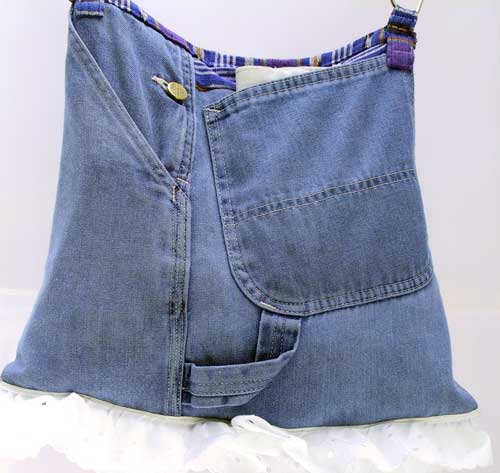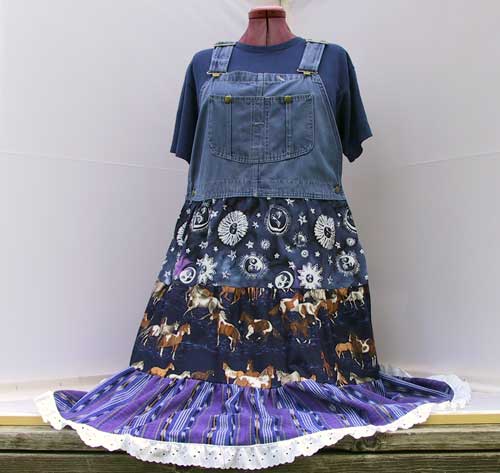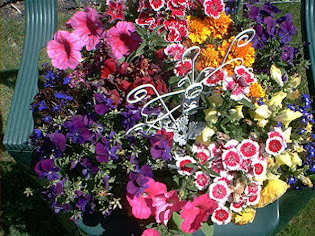You don't have to choke down alfalfa sprouts or knock back jiggers of carrot
juice to get your nutrients. These eight foods taste good (think cocoa, not
quinoa), and they're good for you. Here's how to stir, sprinkle, slide, or
otherwise sneak a little preventive medicine into the things you eat every
day.
1. WALNUTS
WHY: Nuts are like nutrition pellets: They're rich in protein, low in
artery-clogging saturated fat, and high in the phytonutrients that may
protect you from cancer. Walnuts, in particular, have more antioxidants and
omega-3 fatty acids than any other nut�plus fiber and magnesium, which
regulate insulin and glucose levels and help prevent diabetes.
HOW: A little goes a long way. Just one serving�14 walnut halves (a half
cup)�has more antioxidants than two glasses of red wine. Food editor Sandra
Gluck has these suggestions: Stir chopped walnuts into low-fat ice cream,
yogurt, or soups. Use walnuts instead of pine nuts in pesto. Or substitute
them for croutons in salads.
2. POWDERED MILK
WHY: Nonfat powdered milk makes foods taste creamier and more decadent, and
it's full of calcium and muscle-building protein. Adequate calcium
levels�1,200 milligrams a day�are linked to good bone health, colon cancer
prevention, and even weight loss, says Jana Klauer, M.D., author of How the
Rich Get Thin (St. Martin's Press; 2006).
HOW: Nonfat dry milk is best in creamy foods, such as smoothies and yogurt,
and in warm dishes, like hot cereals and soups. Start with a tablespoon, and
add more to taste (dry milk is slightly sweet, so be judicious when spooning
it into savory dishes). To enhance the flavor of macaroni and cheese, mix it
with the cheese sauce before combining it with noodles.
3. COCOA
WHY: Cocoa, chocolate's key ingredient, makes sweet and savory dishes taste
both rich and complex. And natural cocoa is filled with flavonols, which
have been shown to lower "bad" cholesterol, promote circulation, and
neutralize cancer-causing free radicals. Check labels: The more cocoa a
product contains, the more flavonols it has.
HOW: Pure unsweetened cocoa powder and dark chocolate have the most
flavonols; milk chocolate and chocolate syrup have the least. Stir a
teaspoon of natural cocoa powder into your afternoon coffee to give it a
mocha flavor. Sprinkle a spoonful of cocoa into a banana or peanut butter
smoothie. Add a teaspoon or two to chili, hearty soups, or stews.
4. GINGER
WHY: This root eases nausea as well as muscle and joint pain. In clinical
studies, about two teaspoons of fresh ginger relieved chronic inflammation
when taken daily. It may protect against Alzheimer's disease and minimize
cold symptoms. The juice and powder forms also have benefits.
HOW: Stir minced fresh ginger into stews and soups. Throw freshly grated
ginger (no need to peel) and some of its juice into barbecue sauces. Add
dried ginger to muffin, cake, and cookie batters. Mix chopped crystallized
ginger into mashed sweet potatoes, yogurt, or cottage cheese.
5. ALMONDS
WHY: Almonds are chock-full of protein and fiber, which help lower
cholesterol levels. Plus, they pack calcium, iron, and vitamin E as well as
vitamin B (biotin), which aids metabolism and strengthens hair and nails.
Perhaps most important, almonds have arginine, an essential amino acid
that's been shown to benefit the heart.
HOW: At 164 calories per ounce (about 23 almonds), you don't need to eat a
lot to benefit. A serving is just enough to coat your palm. Nutritionist
Lisa Hark, coauthor of The Whole Grain Diet Miracle (DK Publishing; 2006),
suggests substituting almond butter for peanut butter. Or try sprinkling
sliced almonds over salads, pasta, soups, yogurt, and cereal.
6. PUMPKIN
WHY: Pumpkin offers both alpha and beta-carotene, natural antiinflammatory
agents that are good for long-term heart health and for vision, says Steven
Pratt, M.D., coauthor of Super Foods Health-Style (William Morrow; 2006).
It's also low in calories and high in iron and antioxidants, including
vitamins C and E.
HOW: A cup of canned pumpkin pur�e has only 83 calories, but it packs seven
grams of fiber (avoid pumpkin-pie filling, which has added sugar). Toss a
few tablespoons of pumpkin pure� with pasta. Stir the puree into vegetable
soups to add flavor and smoothness. Or spread pumpkin butter (similar to
jam) on toast.
7. FLAXSEED
WHY: Flaxseed gives many foods a delicious, nutty flavor. The seeds are high
in fiber and are the best plant source for omega-3 fatty acids, which
protect against heart disease and hypertension. They also contain lignins,
which balance estrogen levels and may protect against breast cancer.
HOW: Crush the seeds in a grinder; otherwise, they will pass through your
body undigested. And be sure to store them in an airtight container in your
refrigerator so they won't spoil. Mix ground flaxseed into oatmeal, cereal,
yogurt, or a smoothie. Or spoon it into hearty pasta dishes.
8. BEANS
WHY: Legumes of all kinds are loaded with protein as well as
cholesterol-lowering fiber. They also have lots of folate, which is
important in protecting against birth defects and is so essential both
before pregnancy and during the first few weeks of it, says dietitian
Marilyn Tanner, a spokeswoman for the American Dietetic Association.
HOW: Red beans are richest in antioxidants, but pick a bean you love and
work it into your diet. A half-cup of most beans satisfies about a quarter
of the recommended dietary allowance for folate (400 micrograms). A few
suggestions: Add drained and rinsed canned beans to salads and soups. Or
throw cooked lentils into pasta sauces





























